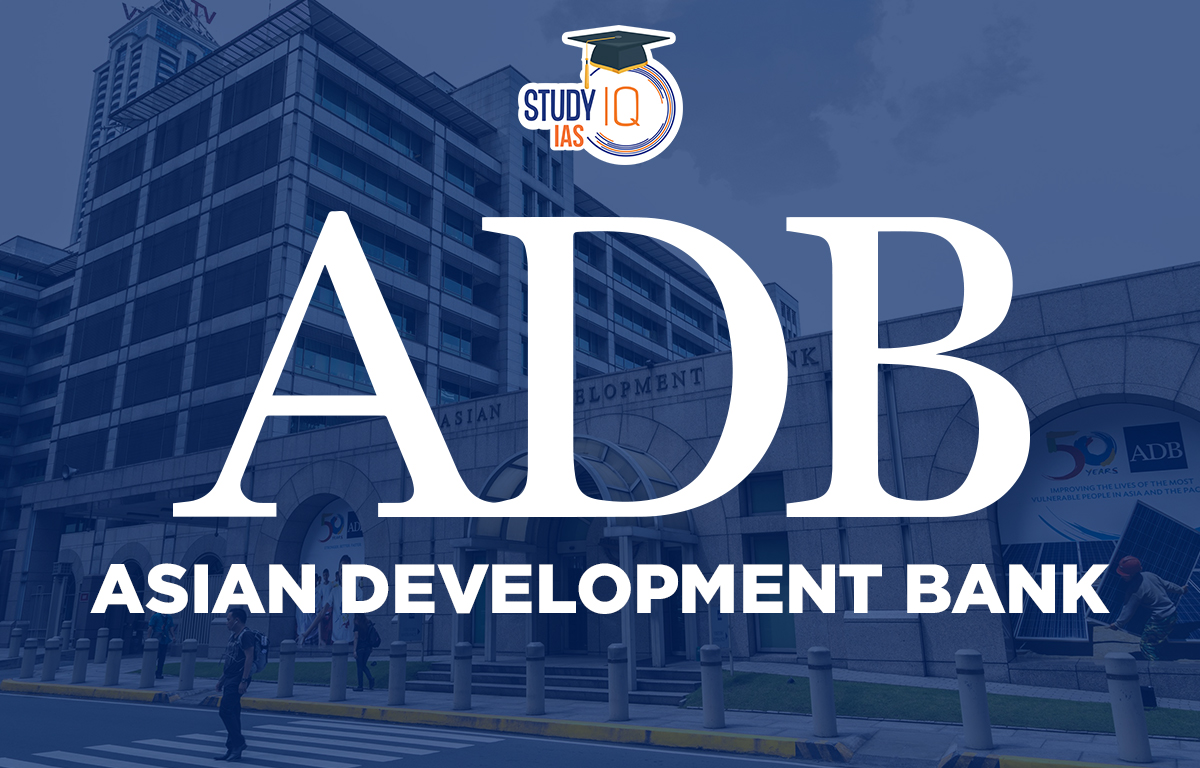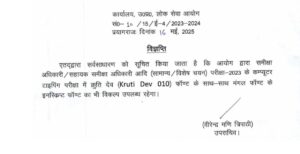Table of Contents
Context: Pakistan took a $350 million loan from the Asian Development Bank to support women’s financial inclusion. Its total debt has reached PRs 76,000 billion in nine months.
Asian Development Bank (ADB)
The Asian Development Bank (ADB) is a regional development bank founded in 1966 to promote Asian and Pacific economic and social development. ADB is a multilateral development bank for the Asia-Pacific region. The bank is headquartered in Manila, Philippines, and operates over 30 branches throughout the region. The Asian Development Bank supports its member countries’ economic development efforts by providing loans, grants, and technical assistance. It focuses on infrastructure development, education, health, governance, and environmental sustainability, among other things.
| Facts about the Asian Development Bank (ADB) | |
| Established on | 19th December 1966 |
| Aim | Prosperous, inclusive, resilient, and sustainable Asia and the Pacific and committed to eradicating extreme poverty in the region. |
| Headquarters | Manila, Philippines |
In addition, the bank promotes regional cooperation and integration among its member countries. The Asian Development Bank has 69 member countries as of 2025, with 49 from the Asia-Pacific region and 20 from outside the region. The Asian Development Bank is owned by its member countries, with Japan and the United States being the largest shareholders.
India is one of ADB’s founding members. In recent years, the ADB has prioritised private sector development, gender equality, and climate change mitigation and adaptation. In response to the COVID-19 pandemic, the bank has also committed to increasing its lending for social protection and health projects.
Establishment of Asian Development Bank (ADB)
The Asian Development Bank (ADB) was founded in 1966 when 31 member countries signed the ADB Charter. The bank was established to promote economic and social development in the Asia-Pacific region, with an emphasis on poverty alleviation.
The ADB was founded in the early 1960s by a group of economists and policymakers who recognised the need for a regional development bank to support the economic growth of Asian and Pacific countries. The establishment of the ADB was also seen as a way to counterbalance the influence of other international financial institutions dominated by Western countries, such as the World Bank and the International Monetary Fund.
President of Asian Development Bank
The present President of the Asian Development Bank (ADB) is Masato Kanda. He was elected President by ADB’s Board of Governors and took office on February 24, 2025. He is the 11th President of ADB and, true to long-standing tradition, is from Japan, which is among the bank’s biggest shareholders. He replaced Masatsugu Asakawa.
Functions of Asian Development Bank
Provides support via– Loans, Grants, Technical Assistance, Equity Investments.
- Supports: Governments, Private Sector, Public-Private Partnerships
- Promotes: Social and economic development
Governance of ADB
- Governed by a Board of Governors (one per member country)
- Board elects a 12-member Board of Directors:
- 8 from regional members (Asia-Pacific)
- 4 from non-regional members
- President is elected for a 5-year term, chairs the Board, and runs the Bank.
- All ADB Presidents have been Japanese (Japan is the founding and largest shareholder).
Membership of Asian Development Bank
ADB was started with 31 members, now has 69 members:
- 49 regional members (Asia & Pacific): India, China, Japan, South Korea, Australia, etc.
- 20 non-regional members: Europe, North America, and others.
- Open to UNESCAP members, other regional and non-regional UN members.
Voting Power in ADB
Uses a weighted voting system (like the World Bank)
- Voting power is based on capital subscriptions
- Top 5 Shareholders:
- Japan – 15.6%
- USA – 15.6%
- China – 6.4%
- India – 6.3%
- Australia – 5.8%
Source of Funding of ADB
Raises capital via international bond markets and is also funded by:
- Member contributions
- Loan repayments
- Retained earnings
Asian Development Bank and India
India and the Asian Development Bank (ADB) have had a long-standing relationship since India became a founding member of the ADB in 1966. The ADB has provided significant financial and technical assistance to India’s development efforts in a variety of sectors over the years.
The following are some of the key areas of cooperation between India and the ADB:
- Infrastructure development: The ADB has funded several infrastructure projects in India, including highway, railway, and port construction, as well as urban infrastructure and renewable energy projects.
- Agriculture and Rural Development: Through various programmes and projects, the ADB has helped India improve agricultural productivity and rural development.
- Education and Skill Development: The ADB has funded a number of education and skill development initiatives in India, including vocational training and higher education initiatives.
- Water Supply and Sanitation: The ADB has helped India improve access to safe drinking water and sanitation facilities, especially in rural areas.
In recent years, the ADB has stepped up its engagement with India, approving several large loans to aid the country’s development efforts. The Asian Development Bank approved $3.9 billion in loans to India in 2020, including funding for infrastructure projects, social sector initiatives, and COVID-19 response efforts. Over the years, the ADB-India partnership has been critical in assisting India’s economic growth and development.
Asian Development Bank UPSC
The Asian Development Bank (ADB) is a key player in promoting regional cooperation and integration in Asia and the Pacific. It has supported numerous infrastructure projects in the region, including roads, railways, ports, and airports, as well as energy, water supply, and telecommunications projects.
The ADB is also involved in environmental sustainability and climate change mitigation in the region. The Asia-Pacific Climate Finance Fund was established to support climate change adaptation and mitigation projects in the region.
Candidates taking the UPSC (Union Public Service Commission) exam may be asked questions about the ADB’s objectives, functions, and activities in the international relations and current affairs sections. It is critical to stay up to date on the latest developments concerning the ADB and its activities in the Asia-Pacific region. This article contains all the details related to Asian Development Bank. To learn more about UPSC Preparations go to the official website of UPSC Online Coaching.


 UPPSC RO ARO Exam Date 2025 Out: Typing ...
UPPSC RO ARO Exam Date 2025 Out: Typing ...
 Maharashtra Bill to Curb Urban Naxalism,...
Maharashtra Bill to Curb Urban Naxalism,...
 International Maize and Wheat Improvemen...
International Maize and Wheat Improvemen...





















